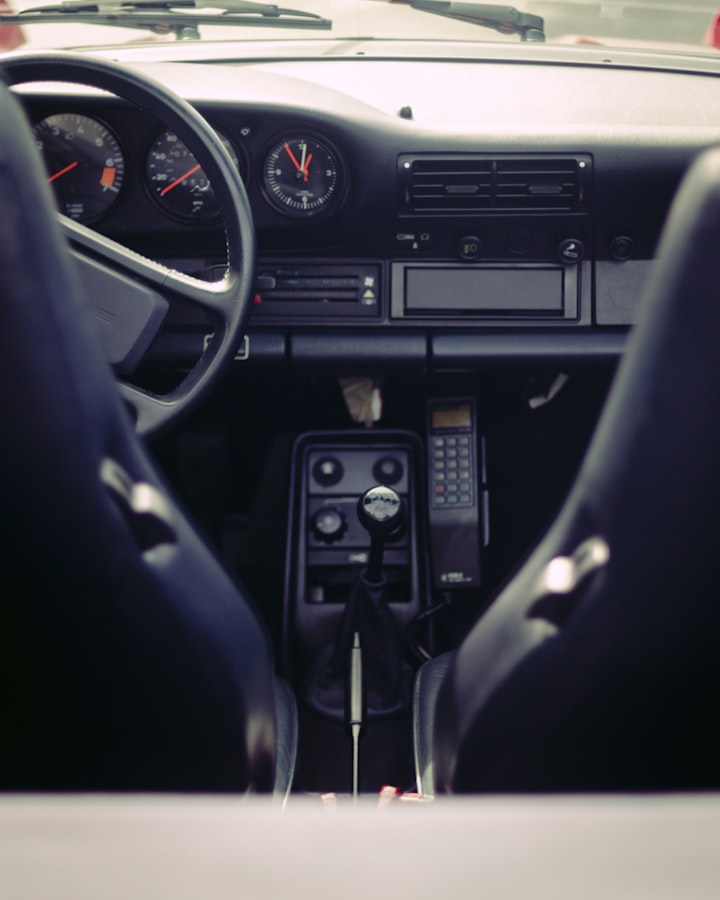5 Car Driving Tips for Beginners
Helpful tips for all new drivers out there!

If you’re a beginner driver who just got their driver’s license and so feel like a million bucks, there’s a little pro secret you need to understand before you set off conquering the streets of your town.
Even the best and most experienced drivers out there intentionally retain a small amount of fear when driving because it makes them more alert. The thing with driving is, while you shouldn’t be so scared of it as to be unable to control the vehicle well, a small dose of fear may be good for you.
Indeed, the troubles start when you’ve been driving for a couple of months and start feeling confident and relaxed behind the wheel. This is the area where accidents happen and the culprit is often that air of carelessness and invincibility.
To be truly in control, you need to be vigilant and understand that even though you may be a good driver, there are plenty of bad ones out there—and many accidents could have been avoided if the speed of the vehicles was lower. (Or if the participants weren’t trying to do figure skating with their cars in icy conditions.)
Generally speaking, it’s the driving school you attend that will give you a clear idea of how serious traffic is. Now, obviously, the better the driving school, the fewer problems you’ll have with understanding the art of driving. Picking a good one is of essential importance for your future success as a driver. If you’re from Australia, for example, ABC Driving School can be a good choice. The most important thing is that their training is thorough and detailed.
In this article, we’ll give you five tips on how to drive safely and effectively as a rookie, so that you can avoid uncomfortable situations and accidents.
Right then, without further ado, here’s the deal.
5 Car Driving Tips for Automotive Rookies
1) Check Your Mirrors and Adjust Them
Many newly hatched drivers, so to speak, consider the side mirrors as well as the rearview mirror as no more than an afterthought and something they only need to pay attention to while taking the final exam.
This, of course, couldn’t be farther from the truth, as these important pieces of car equipment are there for a very good reason, indeed. Namely, they are very important for figuring out how much space you’ve got left while pa rking, as well as in understanding if a cyclist is approaching you from a blind angle, and you can't see him or her that well otherwise.
So, no matter how bored you may be to check the mirrors every time you turn left or right, be sure to do so, because you may end up preventing an accident.
2) Use the Hand Brake
Hand brakes often go unjustly unused because many inexperienced drivers consider them rather an overkill. The thing is, while hard brakes may not be necessary for every driving situation, they’re still quite useful in many ways.
For example, parking on a sloped surface is an obvious one. Even though putting it in gear will act as a de facto brake, if the slope is too steep, this will put an unnecessary amount of pressure on your engine and the gearbox, which may shorten its lifespan. In these situations, a handbrake is an obvious choice.
Another way you can use your hand brake is when waiting at the traffic lights. Some streets are sloped, so, rather than having to keep your foot on the brake pedal while you’re waiting, you can use the hand brake and then disengage it when the light turns green.
3) Get Familiar With the Car
As you already know, cars come in all shapes and sizes—and their differences aren’t simple surface-deep, either.
The degree of sensitivity of the clutch, the position of different indicators on the dashboard, as well as the position of the gears all can differ depending on what sort of car you’ve got.
While you obviously won’t have to worry about the gear changes with an automatic, if you have a manual car, you have to get familiar with its gear positions before you can hit the streets. This can spare you quite a lot of embarrassment while you’re out there. (Imagine reversing into someone at traffic lights because you messed up the gears.)
4) Adjust Your Seat
The bane of many a driving school schoolboy’s and schoolgirl’s existence was certainly the position of the driver’s seat at one point or another during the classes.
The thing is, this parameter doesn’t have that much influence on your driving later on when you grow more experienced, but as a rookie, it may do wonders for your special awareness. So, to feel comfortable in your seat while driving, make sure you’ve adjusted the seat first.
5) Avoid Distractions
… Especially if you’ve just hit that plateau where you feel comfortable while driving. If you feel so confident that you start texting or doing your makeup while driving, make sure to stop doing what you’re doing and concentrate on the road. This cannot be stressed enough, truly.
All things considered, no matter how good you’re at it, driving is still an activity that needs to be taken seriously and approached with alertness. Be safe out there on the road and have fun driving.






Comments
There are no comments for this story
Be the first to respond and start the conversation.